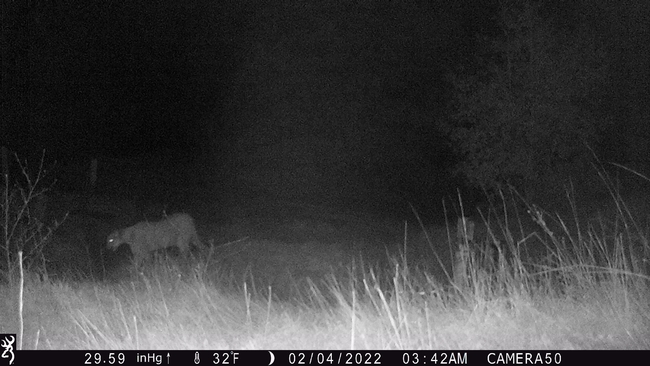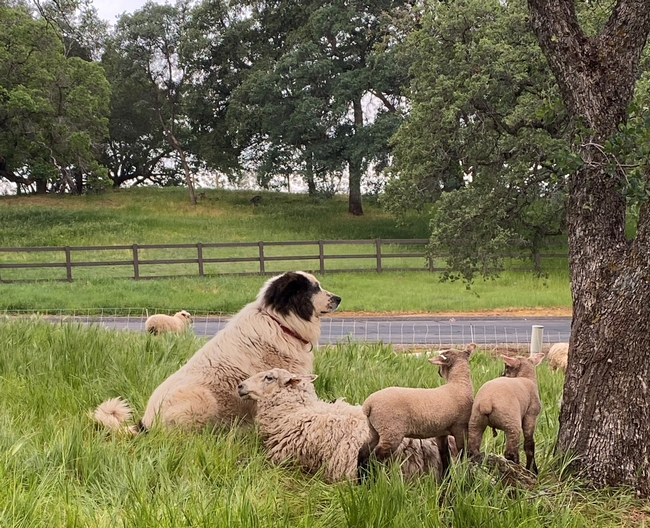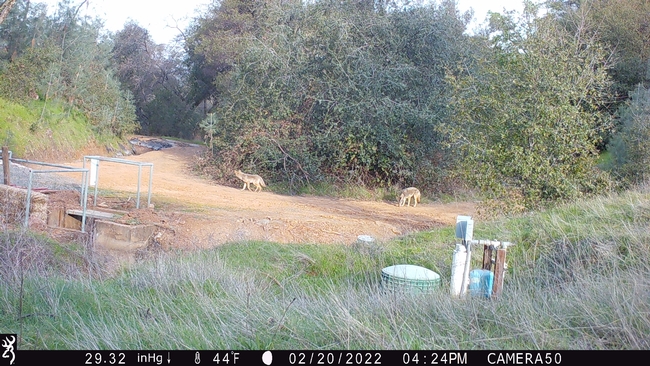Last month, between dog food and vaccines, we spent just over $103 on our three livestock guardian dogs (LGDs). For the first part of April, our two older dogs (Bodie and Elko) were with our ewe-lamb pairs on annual rangeland west of Auburn. Our younger dog (Dillon) was protecting our rams. After we sheared the sheep over the third weekend of April, Dillon and Bodie went with the pairs to irrigated pasture; Elko stated with a handful of late lambing ewes at our home place. During that time frame, we lost a lamb to disease, another to a fencing mishap, and a third due to an assumed case of thievery (by Dillon - see "The Right Dog for the Job"). We didn't, however, lose any sheep to predators - in fact, we haven't lost any sheep where they were protected by dogs for at least half a decade. But how do we know whether our dogs are a cost-effective livestock protection tool?
Along with my colleague Carolyn Whitesell (UCCE Human-Wildlife Interactions Advisor in the Bay Area), I just published a new peer-reviewed analysis of the economics of LGDs in the Western Economics Forum (you can download the full paper here). If you're not into reading journal articles (and who is, really!?), here are our key findings:
Benefits of Using LGDs
- LGDs likely reduce the indirect, stress-induced losses associated with depredation (including reduced weight gains, lower conception rates, and increased labor).
- Ranch-raised ewes may have greater value than purchased ewes given their local adaptation to management and forage conditions.
- Sheep guarded by LGDs travel greater distances to forage in rangeland conditions, increasing grazing efficiency.
Cost Factors
- Labor costs and dog:livestock ratios vary greatly in real-world settings. Maximizing labor efficiency, and determining the proper number of dogs by operation and season can reduce costs.
- Successful bonding techniques are a key driver in LGD acquisition and development costs (and subsequent depreciation expenses).


